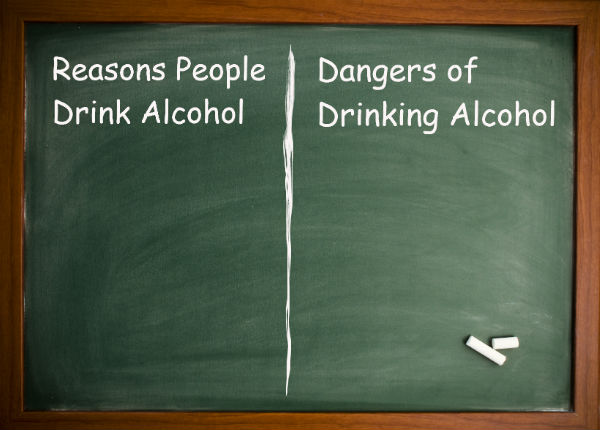Lessons from an Alcohol Abstinence Educator: Rev. Ray Bayley’s classroom technique
I recently had the pleasure of spending a few minutes picking the brain of a pioneer of the Alcohol Problems Council of Wisconsin, Rev. Ray Bayley. Decades ago, Rev. Bayley was actually a full-time employee for the Alcohol Problems Council of Wisconsin, and he spent many hours leading practical interactions with teenagers in schools across the state. His goal was to help young minds arrive to good conclusions about the dangers of alcohol and to encourage abstinence. I asked Rev. Bayley about his basic presentation and methods, and he was happy to share his simple but effective outline.
Ray explained he would begin by heavily using the blackboard, dividing it into two distinct sections. As he opened up with the kids, he asked for their help to compile a list of the perceived benefits of drinking alcohol. He intentionally wasn’t picky about their answers (as he so eloquently put it, “good, bad or indifferent”, if people somewhere use that excuse to drink, the answer was written on the board.) He made sure the students understood they didn’t even have to believe the reasons they mentioned — as long as someone somewhere used that excuse as a benefit of drinking alcohol, he would write the item on the board.
After they had exhausted every possible supposed benefit of alcohol consumption — “good, bad, or indifferent” — Rev. Bayley would proceed to ask them to help him fill the other side of the board. It dawned on the students that they were creating a list of pros and cons, and the purpose of the exercise was to force their minds to consciously examine the dangers and negative impact alcohol CAN have. Again, it was clear that not every bad thing on the list would happen to every drinker, but the list would represent all possible dangers. If a potential danger existed, it needed to be on that list.
Rev. Bayley was quick to point out that the students saw this discussion as very fair and yet they themselves were providing all the ammo he needed. It wasn’t necessary to bring in a full-fledged lecture, in fact that probably would be LESS effective. As the board began to quickly fill up, it became obvious to everyone that 1 side of the board had far many more possibilities than the other side.
At the end of the long enumeration of supposed benefits and actual dangers, Rev. Bayley would pose this question, “Given the dangers of drinking, do any of the supposed benefits of alcohol justify you drinking alcohol?” He would follow by saying, “This is a choice for you to make for yourself. Not for you to make for someone else, and not for someone else to make for you. You must decide.”
This method leaves a good taste in the mouth of students because it is very fair. It is not some stranger getting up in front of the class ranting against alcohol. The pros and the cons were created by the students, and the choice of what to do with alcohol was left as a challenge to the students. I can picture this same presentation working in a classroom today.




